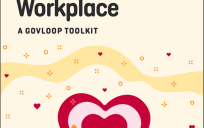 Did you know that “burnout” has been officially classified as a disease by the World Health Organization? Signs of burnout include loss of energy, increased cynicism and reduced performance levels. And a recent Gallup poll cites the following symptoms of employees who struggle to survive:
Did you know that “burnout” has been officially classified as a disease by the World Health Organization? Signs of burnout include loss of energy, increased cynicism and reduced performance levels. And a recent Gallup poll cites the following symptoms of employees who struggle to survive:
- More likely to take a sick day
- Less likely to discuss performance goals
- More likely to visit the emergency room
- More likely to leave their current employment
- Less confident in their own performance.
All of this spells T-R-O-U-B-L-E for agencies attempting to attract and retain talent. In my last post, I discussed the importance of dealing with the softer side of change. Supporting employees through change and transition can help reduce their stress levels. However, protecting your employees from burnout can improve engagement and the performance level of your department.
What other things can we do to make employees feel supported and valued?
As a Continuous Improvement Specialist, I work directly with employees in assisting them with streamlining their processes. As we work together to identify the inefficiencies in their daily processes, I often ask the question “Where are your frustration points?” This question usually leads to the identification of broken processes in dire need of improvement.
Have you ever asked your employees “What are your frustration points?”
Most leaders fear to ask this question. “Won’t this just turn into a griping session?” Yes, that is a possibility. But it can also be productive. Discussing frustrations does not have to be unproductive. Here is a process that can help you turn a discussion about frustrations into a plan for change.
From Frustration to a Plan for Change
Schedule a dedicated block of time to discuss issues as a team. It is easy to get caught up in the daily work that keeps things moving along. However, failing to dedicate time to help your team think through issues will only lead to increased stress levels for them, and sustained levels of high stress will eventually lead to burnout. Do whatever it takes to carve out a four-hour or a full-day session to discuss issues and brainstorm. Although you can weave a teambuilding exercise into the agenda, it is best to stay focused on collecting information that will ultimately lead to real change in day-to-day work.
Facilitate honest communication. One goal of the meeting will be to hear from everyone, not just the vocal team members. You may need to call upon a skilled facilitator to assist you with navigating this discussion. Using Gamestorming or other structured activities will help the team engage in a way that is non-threatening. It is important that your facilitator helps you create meeting artifacts. You want to get your team co-creating as you talk through your frustration points.
Focus on empathy. It is often easy to fall into the trap of offering a “quick fix” for whatever comes up in the discussion. However, failing to fully explore the issues at hand will lead to premature decisions that will later fall apart. Instead, help the team explore potential solutions and think about the impacts of changing their current state. Your focus should be on developing a sustainable agreement that will lead to lasting change. A quick icebreaker that will get your team engaged is an Empathy Map. Completing this map from the point-of-view of who your agency serves may identify high priority focus areas that will significantly improve your operations.
Co-create a path forward. Before closing out your meeting, work with the team to create a list of “Next Steps.” Be realistic about what can change and what cannot change. If there are problems that will not be resolved quickly, be sure to point them out to the team. And explain the reasoning behind why it cannot change. Giving your team false hope that things will get better will only lead to more frustration. Focus instead on what you can change no matter how small it may be.
Give the team control to implement improvements. An easy way to reduce employees frustration levels is to give them more control over their daily work. From your meeting, you may want to make follow-up assignments for individuals to bring back information or solutions to specific problems that were identified. You must also be willing to reduce the workload and prioritize work to give them the time and freedom to improve their processes. Create an accountability structure and check-in process to ensure that their time is well spent.
End With a Follow-up Strategy
The meeting is just the beginning. The real engagement will begin after the meeting. Having a follow-up and follow-through strategy is key to supporting employee engagement. Create a schedule for routine updates on the progress of identified initiatives, and work hard to remove roadblocks and barriers that will interfere with your team’s success.
What strategies have you seen be effective in reducing the risk of employee burnout?
Rebecca Mott is a GovLoop Featured Contributor. She is a self-proclaimed change agent and continuous improvement leader with over 20 years of utility industry experience leading technical teams to solve problems. She currently coaches leaders and teams to apply Lean Six Sigma methodologies and engage by focusing on the power of “we.”





All these ideas are brilliant and seem so obvious but a few companies and company leaders implement any of these ideas to maintain their employees’ work-life balance.
Thank you. Companies who address the issue of employee burnout will become employers of choice for talented people. Work-life balance is no longer a “would like to have.” For some employees, it is a “must have.” And companies that fail to understand this trend will not be able to recruit or retain talent.